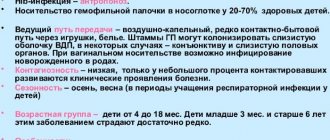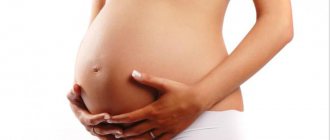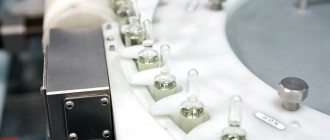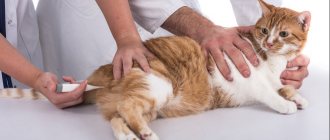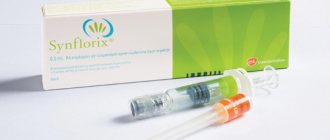FEATURES OF INFECTIOUS DISEASE
Haemophilus influenzae infection refers to a complex of infectious diseases that develop after the penetration of Haemophilus influenzae into the body. Infection can occur during personal contact with a sick person and carrier, through household items (shared toys, dishes).
Important! According to statistics, up to 40% of children in kindergarten are carriers of Hemophilus influenzae. Therefore, a child who attends children's groups gets sick more often.
The following forms of the infectious process are characteristic of hemophilus influenzae infection:
- ORZ. The most common form of pathology;
- Inflammation of the middle ear. Haemophilus influenzae is characterized by high resistance to traditional drugs, so it is quite difficult to cure the infection;
- Epiglottitis. The pathology develops mainly in children under 4 years of age and is characterized by a sharp increase in body temperature, sore throat, pain during speaking and swallowing. The disease can cause blockage of the airways and respiratory arrest. Therefore, if epiglottitis is suspected, the child needs urgent hospitalization;
- Haemophilus influenzae respiratory tract infection: pneumonia, bronchitis;
- Meningitis. This infectious lesion of the membranes of the brain is particularly dangerous for children under 1 year of age. The disease is difficult to treat. According to statistics, in 20-30% of cases, hemophilic meningitis leads to death;
- Purulent cellulite. The disease leads to purulent-inflammatory processes in the subcutaneous fat;
- Sepsis. The most dangerous form of hemophilus influenzae infection, in which pathogenic agents penetrate the blood and spread throughout the body.
The resistance of the pathogen to antibiotic therapy significantly complicates treatment. Therefore, the optimal way out of this situation is vaccination against Haemophilus influenzae infection. Only this will minimize the risk of developing serious diseases.
Which children need the Haemophilus influenzae vaccine?
WHO recommends that all healthy children aged 6 weeks to 4 years be vaccinated against Haemophilus influenzae. The Russian National Calendar stipulates that vaccination against hemophilus influenzae is recommended for children at risk, and provides the following signs for this group:
- prematurity and low weight,
- diseases of the nervous system,
- congenital anomalies that increase the risk of developing hemophilus influenzae infection,
- any crowding of living and communication conditions, including visits to preschool institutions,
- cramped financial situation of the family.
The discrepancy in the recommendations with the Russian calendar is most likely explained by the budget allocated for government purchases of drugs for children's clinics.
WHEN IS IMMUNIZATION REQUIRED?
Vaccination against hemophilus influenzae is recommended for patients of the following categories:
- All infants who have reached 3 months of age;
- Organized children attending children's groups (sports sections, kindergartens, clubs);
- Patients of any age who have severe immunodeficiency (HIV, cancer);
- Elderly people;
- Patients after removal of the spleen;
- Children living in large families or orphanages;
- Infants who are bottle-fed. In such a situation, the child does not receive antibodies with milk, and therefore cannot resist infections;
- Frequently ill children;
- Babies who were born prematurely.
The peak development of meningitis and pneumonia caused by Haemophilus influenzae occurs at the age of 6-12 months. Therefore, it is necessary to get vaccinated against Haemophilus influenzae in a timely manner.
Vaccination of infants has been mandatory since 2011, the procedure is carried out in district clinics. For children over 1 year of age, immunization helps protect against other types of Haemophilus influenzae infection: acute respiratory infections, otitis media and bronchitis.
TYPES OF VACCINES
The vaccine against Haemophilus influenzae is a drug developed on the basis of polysaccharides of the capsule of the pathogenic microorganism conjugated with tetanus toxoid proteins. This makes it possible to convert microbial particles into an antigen, which contributes to the formation of a pronounced immune response. Conjugation also helps reduce the reactogenicity of the vaccine preparation, making it as safe as possible for the fragile organism of infants.
Important! The vaccine against Haemophilus influenzae has a unique effect, leading to an exponential increase in antibodies against the infectious agent if the drug is administered repeatedly.
The following vaccines against hemophilus influenzae are widely used in Russia:
- Mono-vaccine Act-HIB (manufactured in France). The drug is created exclusively on the basis of Haemophilus influenzae antigens. This vaccine has been used to prevent Haemophilus influenzae for many decades and has proven its effectiveness. Therefore, it is widely used to form stable immunity in children under 12 months;
- Monovaccine Hiberix. The vaccine was manufactured in Belgium and is an analogue of Act-HIB. In Russia, the drug has been used for a relatively short time;
- Polyvalent drug Pentaxim. The French vaccine will protect the child’s body from 5 serious diseases: polio, whooping cough, Haemophilus influenzae, tetanus, diphtheria. However, the pertussis component increases the reactogenicity of the vaccine preparation. Therefore, vaccination against Haemophilus influenzae infection will lead to the development of pronounced side effects;
- Combined vaccine Infanrix penta. The drug, produced in Belgium, is an analogue of Pentaxim.
Due to their ease of use and effectiveness, combination vaccines are widely used for vaccination against Haemophilus influenzae in district clinics. However, parents have to purchase the vaccine themselves at the pharmacy.
Vaccine options
Modern vaccines are chemically linked antigens of the Haemophilus influenzae capsule and tetanus toxoid, which is necessary for the main antigen to produce immunity in children under 18 months of age.
The vaccine with the most widespread use in Russia is Act-HIB, produced by SANOFI PASTEUR, (France). It should be the original PRP-T vaccine, which made it possible to achieve major successes in eliminating Hib infection in developed countries of the world. Single vaccines against hemophilus influenzae are registered in Russia: Act-HIB (conjugated polysaccharide), Hiberix (conjugated polysaccharide), and combined vaccines: Pentaxim vaccine, which includes diphtheria, tetanus, pertussis, polio and hemophilus vaccines, and "Infanrix Hexa" (for the prevention of diphtheria, tetanus, whooping cough, polio, hepatitis B, complete with a vaccine against Hib infection).
IMMUNIZATION SCHEME
Vaccination against Haemophilus influenzae is carried out in infancy in the absence of contraindications.
The vaccination schedule varies depending on the patient’s age group:
- The first vaccination against hemophilus influenzae is recommended for babies at 3 months. Vaccination is often combined with immunization against diphtheria, whooping cough and tetanus. The next 2 vaccinations are given at 4 and 6 months. Thanks to three doses of the vaccine, the child receives reliable immunity in 95% of cases. After revaccination at 1.5 years, almost 100% protection is formed;
- If vaccinations against hemophilus influenzae infection began after 6 months, then a double dose of the vaccine is sufficient. The interval between vaccinations is 1 month. Revaccination should be carried out 12 months after the last immunization. However, the vaccine is usually given at 1.5 years of age along with DPT;
- For children over 1 year old, it is enough to get 1 vaccination against Haemophilus influenzae. By this age, most babies are exposed to a pathogenic microbe, so they have managed to develop the necessary antibodies. Vaccination allows you to form reliable immunity against Haemophilus influenzae in case of re-infection.
This vaccination schedule allows 95% of vaccinated children to develop reliable immunity, which will last for up to 5 years. Adults are vaccinated against hemophilus influenzae once, because the body of such patients has the necessary antibodies.
Preparation and vaccination schedule
Vaccination with Hiberix involves a preliminary examination of the child by a pediatrician. The Hiberix vaccination involves intramuscular administration. After vaccination, the small patient should be under the supervision of a specialist for half an hour. The vaccination schedule and the number of doses depend on the start time of vaccination:
- in the period from 6 weeks to 6 months, a course is carried out, including 3 injections with an interval of 30-60 days. The child is revaccinated again after a year;
- in the period from six months to a year. Two doses of the vaccine are used, with an interval of 30 days between vaccinations. The child is revaccinated again after a year;
- from 1 year to 5 years the vaccine is administered once.
The individual schedule for administering vaccines and admission to combination with other vaccines are agreed upon with a pediatrician, immunologist or infectious disease specialist. Information about previous vaccinations and tests must be provided to the doctor for consultation. Vaccination can only be carried out by qualified employees of medical institutions with the appropriate license and practical experience.
SIDE EFFECTS AND COMPLICATIONS
After vaccination against Haemophilus influenzae, adverse reactions rarely occur, so the drug is often combined with other vaccines. However, some patients note the development of such symptoms:
- Soreness, swelling of the place where the vaccine was administered. Symptoms develop in 10% of children vaccinated;
- Increased body temperature (up to subfebrile values) in 1% of vaccinated patients.
The listed adverse reactions do not require medication and go away on their own 2-3 days after the injection.
If vaccination against Haemophilus influenzae was carried out using a polyvalent drug (Infanrix penta, Pentaxim), then the following symptoms often develop:
- Convulsions;
- Increased body temperature;
- Swelling of the limb where the drug was injected;
- Local reactions: redness, soreness, hardening of the injection site;
- The occurrence of neuritis of the brachial nerve;
- The appearance of skin itching;
- Decreased appetite, nausea.
If immunization is carried out in the presence of an unidentified contraindication, complications develop:
- Development of angioedema, if there is individual intolerance to any ingredient of the vaccine;
- Existing chronic pathologies become aggravated;
- Development of fever if the child was vaccinated against a background of elevated temperature;
- The occurrence of neurological symptoms due to damage to the central nervous system if immunization was given to an infant with encephalopathy.
However, such cases occur quite rarely, so parents should not refuse vaccination. It is important to understand the importance of immunization for a child's body. After all, timely prevention is better than long and painful treatment.
HOW TO PREVENT THE DEVELOPMENT OF COMPLICATIONS?
Doctors recommend preparing your child for immunization against hemophilus influenzae. To do this, on the day of vaccination, the patient must undergo a thorough examination by a pediatrician.
A week before vaccination, any contact of the child with sick people should be limited.
Also, 3-4 days before vaccination, there is no need to introduce new foods into the diet of children or mothers if the baby is breastfed. This will prevent the development of allergies, which may be mistakenly considered as a complication after vaccination.
After the procedure, doctors recommend following these tips:
- Do not leave the clinic premises for 20-30 minutes. This is necessary to provide medical care to a child who develops an allergy to the vaccine;
- If the child feels well, then you can go for a walk. However, crowded places should be avoided to reduce contact with infected people;
- After immunization, water procedures are not prohibited, but it is better to bathe the child in the shower for the first 2-3 days;
- Do not introduce new foods into the diet for 3 days after immunization.
Venue and method
Vaccination is carried out in municipal medical institutions free of charge for children at risk. Commercial medical clinics offer vaccination services on a contract basis. They have certified vaccines at their disposal. Before immunization, the patient is examined and the necessary laboratory tests are prescribed.
The vaccine package contains a bottle with lyophilisate, a syringe with solvent and instructions for use. According to the description, the drug is a light gray, odorless powder. The syringe is equipped with a thin needle with a dispenser for 1 dose (0.5 ml). Reusing it is not recommended. Immediately before the manipulation, the lyophilized powder is dissolved with the contents of the syringe and the injection is carried out with the same syringe.
The vaccine is administered subcutaneously or intramuscularly. When carrying out manipulation, it is necessary to avoid damage to the blood vessels of the circulatory system. The injection site for small patients under 2 years of age is the upper outer quadrant of the thigh. For older children, the vaccine should be given in the superficial muscle of the shoulder.
The vaccination schedule against Haemophilus influenzae infection is determined by the age of the child. In accordance with the table of the national vaccination schedule, the first vaccine is given at 3 months, the second at 4.5 months and the third at 6 months. At 18 months, revaccination is carried out. If the child is more than six months old before vaccination, 2 vaccinations are prescribed at a monthly interval. Revaccination is carried out at 18 months.
When the child is over a year old, a single dose of the drug is recommended. When vaccinating adults at risk, one vaccine is sufficient.
WHEN NOT TO BE VACCINED?
The following contraindications for vaccination against Haemophilus influenzae are identified:
- A history of hypersensitivity to the components of the drug;
- Acute course of infectious diseases;
- History of convulsive condition;
- Relapse of chronic pathologies;
- Encephalopathy;
- Recorded unpredictable reactions of the child to previous immunization.
If there is even a slight suspicion that the patient has the described problems, vaccination should be abandoned until the condition normalizes.
POSITIVE AND NEGATIVE ASPECTS OF VACCINATION
The number of parents refusing to immunize their children increases every year. Opponents of vaccinations argue that the introduction of vaccine preparations is dangerous for the child’s body and provokes the development of neurological complications and disability.
However, many years of immunization experience have proven the following advantages of vaccination against Haemophilus influenzae:
- High efficiency. The vaccine provides protection for a child for 5 years in 95% of cases;
- Vaccinations have reduced the incidence of haemophilus influenzae meningitis in children by 87% in the UK. There are completely no cases of this infection in the Netherlands;
- Vaccination can reduce the incidence of illness in a child upon entering kindergarten;
- In vaccinated children, if infected, the infection is mild.
The listed facts indicate the need for vaccination if the child has no contraindications.
Principles and purposes of vaccination
Haemophilus influenzae type b is a vaccine-preventable cause of serious illness (meningitis and pneumonia) and death among infants and young children.
Vaccination remains the only effective method of preventing Hib infection, which is becoming increasingly important in light of the increasing resistance of the pathogen to antibiotics. Unlike older children and adults, children under 5 years of age, due to insufficient development of the immune system, cannot independently, without vaccination, form adequate immunity to Hib.
By the end of 2013, the Hib vaccine had been introduced in 189 countries. Global coverage of three doses of this vaccine is estimated at 52%. Coverage levels vary widely across regions. In the Americas, coverage is estimated at 90%, while in the Western Pacific and South-East Asian regions it is only 18% and 27%, respectively.
Good tolerability allows you to combine and combine Hib vaccines with other vaccines in the vaccination schedule and, in particular, with DTP vaccines.
Conjugation of the main Hib antigen with a protein molecule made it possible to use the so-called booster effect. In other words, Hib vaccines have a revaccination effect, when repeated administration of the vaccine causes not just a linear increase in the concentration of antibodies, but an increase in their concentration in geometric progression. The peculiarity of the booster effect is that up to a certain stage, with each repeated administration, the increase in the number of antibodies also increases. This explains why the primary vaccination course consists of several vaccinations, and subsequent booster vaccinations are always carried out with just one dose of the vaccine. This is the basis for the basic scheme for the use of Hib vaccines, when 3 vaccinations with a single booster are given as part of the primary course.
